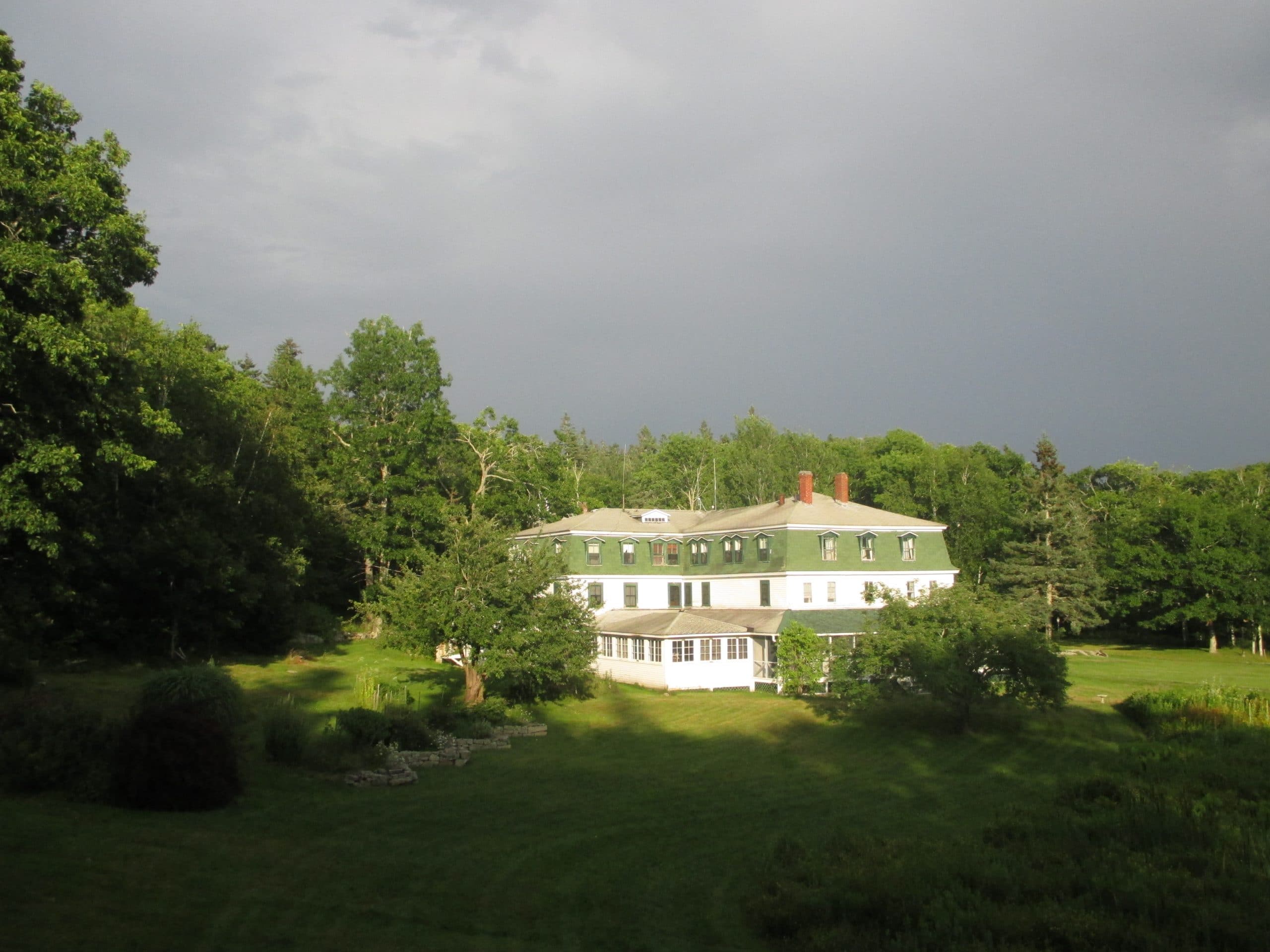Playwright William Congreve said: “Music hath charms to soothe a savage breast, to soften rocks, or bend a knotted oak.” And so it does. Perhaps the Russian revolutionary Lenin had Congreve in mind when he said, according to Maxim Gorky: “I know the ‘Appassionata’ inside out and yet I am willing to listen to it every day. It is wonderful, ethereal music. On hearing it I proudly, maybe somewhat naively, think: See! people are able to produce such marvels!” [He then winked, laughed, and added sadly]: “I’m often unable to listen to music, it gets on my nerves, I would like to stroke my fellow beings and whisper sweet nothings in their ears for being able to produce such beautiful things in spite of the abominable hell they are living.”
I used to listen to music everyday. When I began to teach, I met colleagues who knew about classical music. I knew very little then, not much more than the Strauss waltzes on some old 45rpm records we had at home when I was a boy. I was embarrassed by this, so I embarked upon a course of self-education. I read books about Beethoven and Mozart, and I began to buy records of classical music and tune in to the classical music radio station in Pittsburgh. The more I listened to the music, the better I liked it and the more I came to appreciate its beauty and grandeur. Within a few years, I had nearly five hundred record albums, mainly classical but also about one hundred jazz recordings. I liked the old jazz that another Pittsburgh radio station played, and I expanded out from this to more modern jazz music. Not only did I enjoy all this music, but now I could talk at least somewhat intelligently about it.
My music appreciation “course” took a leap forward when I began to take flute lessons. Every week I went to a local music store in downtown Johnstown (PA) for a one-hour lesson with Mr. Nick Gemus. Nick’s pupils were mostly grade-schoolers, and I always felt a bit strange following a kid .about four feet tall. But Nick was happy to talk to an adult. In between our exercises, he told me about his music career. He was trained as a violinist, but he hit the symphony job market just as the Great Depression struck. He needed work, so he learned to play a bunch of other instruments. He could play all of the woodwinds, and he found work as a jazz and popular musician, playing saxophone, clarinet, and flute. He got me excited about the flute, and before long, I bought a nice open-holed instrument to replace the store rental with which I had started. I practiced all the time, so much that my Sicilian landlady scolded me in her inimitable English. I was keeping her and her husband up at night. “Play inna daytime,” she implored.
I bought as much flute music I could find. I loved it all. Classical and jazz. Vivaldi, Bach, Haydn, Stamitz, Telemann, Rameau, Corrette, Geminiani, Handel, Mozart (who supposedly didn’t like the flute, but listen to his concerto for flute and harp and ask yourself how this could be true), Faure, Gluck, Briccialdi, Debussy, Poulenc; in jazz, Herbie Mann, Roland Kirk, Yusef Lateef, Eric Dolphy, James Moody, Sam Most.
I had my favorites. One was Vivaldi’s Concerto in D Major for flute, called Il Cardellino (The Goldfinch). I listened to it a hundred times. I used headphones so I could hear when the flutist breathed. I learned to play the slow movement, but I left the brilliant first and third movements to Jean Pierre Rampal, Paula Robison, and James Galway. Humans no doubt made music to imitate sounds they heard in nature. Ancient men and women must have listened to birds and tried to imitate their sounds. A mockingbird or a canary can make delightful and complex music. But Vivaldi went the goldfinch one better in his concerto, with fantastic trills, runs, grace notes, and turns, all built into a structured whole that leaves the listener breathless. And the flutist too. Birds can’t do what Vivaldi did. And while Beethoven glorified and sometimes mimicked nature in his Symphony Number 6 ( the “Pastoral” Symphony), he did much more. He made a work of art, a great one. Another favorite flute piece was the Menuet from Bizet’s L’Arlesienne Suite No. 2. Here the melody, played slowly, is so beautiful that you really do want to “stroke [your] fellow beings.” If you want to see human musical inventiveness at work, listen to Rachmaninoff’s Rhapsody on a Theme of Paganini. This is a set of twenty-four variations for piano and symphony orchestra. It is fun to listen to variations, to see if you can hold the theme in mind against the growing complexity of the variations. Keep count of Rachmaninoff’s variations and after seventeen, get ready to be amazed. Number eighteen is a famous and lovely melody, often played alone, and you wonder how it could be a variation on the theme. What the composer did was to invert the theme, that is, literally turn the notes upside down and change the key accordingly. How did he think to do this? He must have been surprised at the result. The wikipedia entry on this work quotes him as saying, “This one, is for my agent.”
When Karen and I moved with the kids to Pittsburgh in 1988, I gave my records to the college library. By then, vinyl was becoming obsolete, and my collection was too cumbersome to take along. I had about one hundred cassette tapes, so I took these and figured I could buy more once we were settled in the city. I was listening more then to Broadway hits and folk music anyway. I leaned toward music that evoked feelings of sadness and melancholy. Sometimes in Pittsburgh, if my affect had been flat for too long (and if I had the house to myself, which wasn’t too often!), I’d gather together my tear-inducing songs, now on CDs, and play them one after the other. Inevitably, the tears would flow, and I would know that I had a heart after all. I used to play a game with one song: “Secret Gardens of the Heart” by Judy Collins. It is a song about memory, about how in our hearts, “the old stay young forever.” I wanted to see if I could listen to it without crying. I never did (nor have). Not once. By the time a dozen songs had played, I had made my way through a litany of woes: personal, familial, work. Then when I played Eric Bogle’s “No Man’s Land” (one of the best antiwar songs ever written), I cried tears of anger and rage for all the dead young men:
But here in this graveyard that’s still No Man’s Land
The countless white crosses in mute witness stand
To man’s blind indifference to his fellow man.
And a whole generation who were butchered and damned.
Indeed. Lenin’s “abominable hell” writ large. I suppose that my listening exercise was therapeutic, a kind of catharsis. I always felt cleansed when I turned off the CD player.
A few years after our move, I suffered a bout of depression. I thought that this was because of some problems with our children and disgust with my job. It got so bad that I went into therapy. The therapist and I began to talk, and the psychiatrist prescribed Paxil. The talk helped, and so did the drug. The knot in my stomach went away, as did the anxiety. However, the side effects of the drug were soon apparent. Some were benign enough. I could drink as much coffee as I wanted without getting hyper and without stomach distress. I was able to concentrate on my work to a remarkable degree. One day when Karen took the kids on a trip, I stayed at my desk working intently for hours, until I looked up and said to myself, “something is wrong here.” Other side effects were not so harmless. Night sweats, overly vivid dreams, indifference to sex. And something very odd. I lost all interest in music. In fact, I could barely stand to hear it. And if I did, some song or other would keep running through my head, in an endless loop, for days at a time.
When the therapist told me that I would probably have to keep taking Paxil for the rest of my life, I quit therapy and threw away my pill bottle. The depression never returned, and the side effects went away. All but one. My aversion to music continued, for more than a dozen years. Every time I forced myself to play a CD or turn on the radio, a song loop would attack my brain. I gave up and figured that a music-less life was my fate.
Then in 2005 and 2006, we lived in a cottage along the Big Thompson River in Estes Park, Colorado. For us, it was pretty primitive: water had to be trucked in; we had a small septic tank that had to be emptied every six weeks; there was no heat in our bedroom; and we had no television. For entertainment in the winter, we watched movies on a laptop computer and listened to music. Either the radio or the CD player was on most of the day and evening. At first, I tuned the music out, but gradually I was able to hear it without songs repeating themselves all night long in my head. Sometimes a song would stick with me, but it appeared as though the drug was finally wearing off.
I started to download music onto my computer, using Rhapsody, one of the download services that lets you buy singles for ninety-nine cents. I didn’t listen to them very often until we moved to Boulder this year. Most of my songs are ones I always liked, some from when I was a teenager. Tunes like “What in the World’s Come Over You” by Jack Scott; “A Lover’s Question” by Clyde McPhatter; “Devoted to You” by the Everly Brothers. The other night, I looked for a song I remember as one of the first popular hits I liked. I had a crush on a girl named Michelle Faith (the nuns must have loved that surname), and for some reason “To Know Him is to Love Him” by the Teddy Bears made me think of her. I was twelve when the song reached number one in 1958. It was written by Phil Spector, who, as someone remarked on the YouTube site for the song,will have a lot of time to listen to it in prison. He apparently got the title from words on his dad’s tombstone.
Though the melody is catchy, the original song is sung without subtlety, or much artistry for that matter. In the YouTube video, the lead singer, Annette Kleinbard (who sang as Carol Connors), is right out of a 1958 highschool yearbook, wearing what looks like a prom dress. It’s all school girl in love, boy doesn’t notice, no hint of sex.
Yet, the song must have had more going for it, because other singers have recorded it, including Emmylou Harris, Dolly Parton, and Linda Ronstadt. When I was searching for the original version to download (it wasn’t available), I saw one by Amy Winehouse. I didn’t know much about her except that people said she was talented and troubled. I downloaded her rendition and played it. It sounded amazingly good. Later that night, I put on my headphones and began to listen to the saddest songs I had on my computer. I decided to include “To Know Him is to Love Him.” Incredible. The singer’s voice has a quality almost comparable to Billy Holiday’s, full of suffering and longing. It was a new song altogether. Like Vivaldi and the goldfinch, Winehouse did Connor one better. She made a work of art. Within a minute I was crying.









Mike….quite the post here……on the Classical side, I had a friend at work that had quite a collection and although I do not remember all of the ones I liked….I do remember I loved the Paganini.Speaking to the music that makes you cry….have you ever listened to “Cowboy Junkies”?….I love their sound. The anger and rage for me is best played out in the music from Les Miserables
Billy Holliday makes me crazy….my younger daughter used one of her songs as her wedding dance.
So happy to hear you enjoy music again….
Dear Kathye, Thanks for the comments. That’s cool about your daughter’s wedding song. I think I have heard Cwoboy Junkies, but I will look them up to be sure. Michael
I just listened to the Amy Winehouse rendition of “To Know Him Is To Love Him” – beautiful and kind of haunting. I, too, remember loving that song as a young girl. Songs like “At Last” and Carole King’s “Loving You Forever” always make me emotional – wishing I could have that kind of love in my life…
I understand about how a song can run through one’s head endlessly – it’s a horrible feeling – like it will never stop – especially when it happens in the middle of the night.
Thanks, Toni. Maybe the song loops are hereditary!! Michael